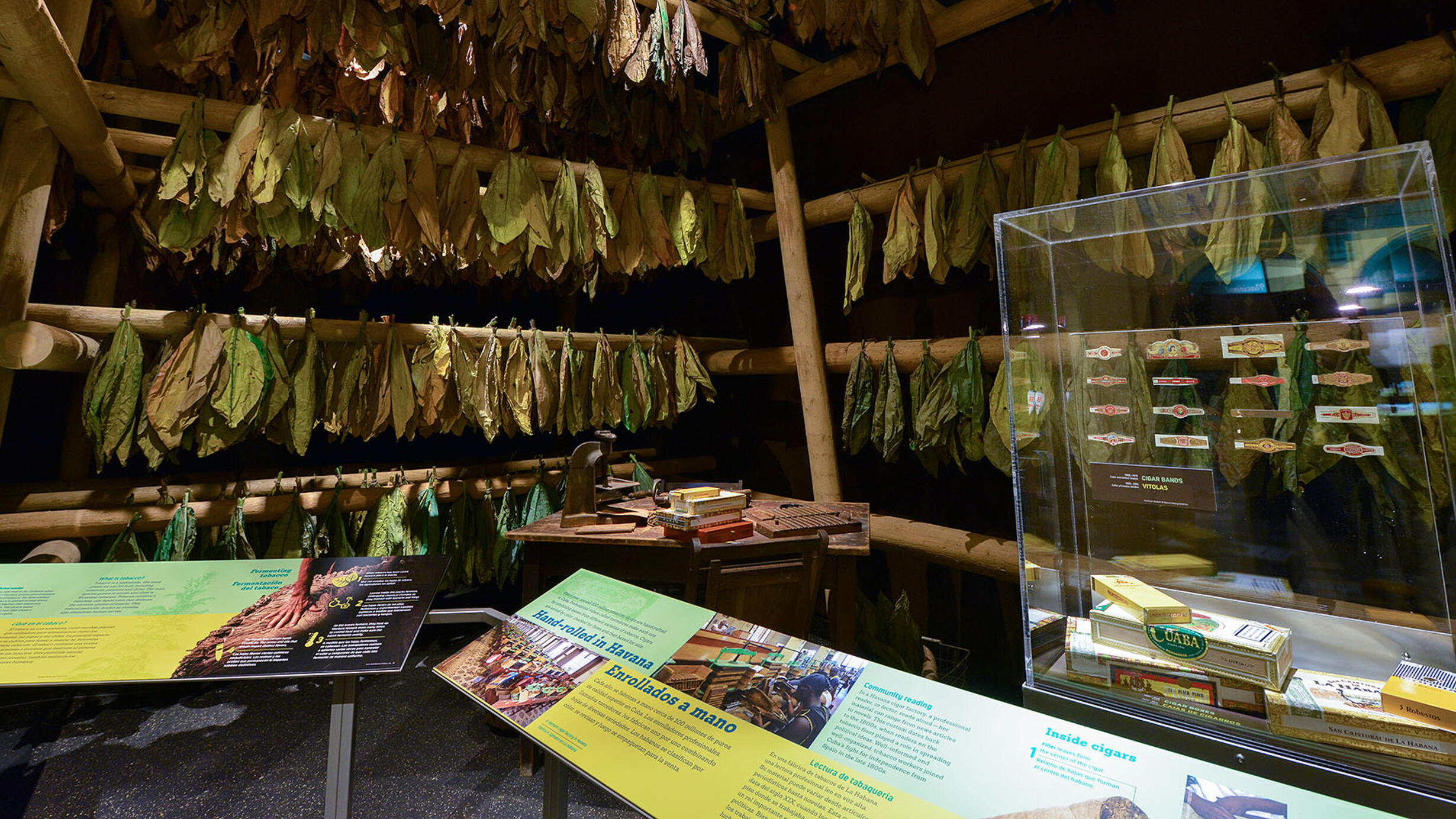Tobacco in Cuba
Part of the ¡Cuba! exhibition.
 A replica of a tobacco shed, in which farmers dry tobacco leaves to make Cuban cigars.
A replica of a tobacco shed, in which farmers dry tobacco leaves to make Cuban cigars.©AMNH/D. Finnin
Growing and Rolling Tobacco
When Spanish sailors first explored Cuba in 1492, they returned with accounts of tall forests, chattering birds, and men and women going from place to place “with a firebrand of weeds in their hands to take in the fragrant smoke.”
Before long, Spanish colonists were growing and smoking tobacco too. As the demand for tobacco spread, the “weeds” became a profitable crop. Cuba opened its first cigar factories in the early 1800s. Today, cigars are still one of Cuba’s leading exports, shipped by the millions around the world.
Courtesy of George Arents Collection, The New York Public Library
Tobacco Harvest
To plant, tend and prepare fine tobacco for Cuban cigars, farmers use exacting methods passed down over generations. Working meticulously, they pick leaves one by one, string them along wooden poles, and hang them in sheds with vents that can open and close to control temperature and humidity. Over weeks, the leaves cure, losing water and turning from bright green to soft brown.
© iStockphoto
Hand-Rolled in Havana
Every year, around 100 million premium cigars are handcrafted in Cuba. Professional rollers called torcedores make each one by combining leaves from different varieties of tobacco. Cigars are sorted by color, checked for flaws, and then boxed for sale.
© J. Azel/Aurora/AGE Fotostock
Community Reading
In a Havana cigar factory, a professional reader, or lector, reads aloud—her material can range from news articles to novels. This custom dates back to the 1800s, when readers on the tobacco floor played a role in spreading political ideas. Well-informed and well-organized, tobacco workers joined Cuba’s fight for independence from Spain in the late 1800s.
© EPA European Pressphoto Agency BV/Alamy
Check out more of the exhibition—explore Cuba's Caves.
Top photo: ©AMNH/D. Finnin